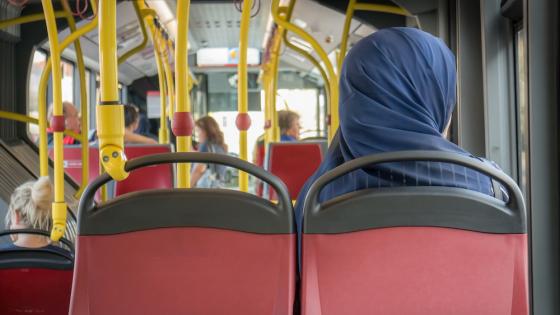Citizenship has been argued to be an effective policy to foster economic and social inclusion into a host country (National Academies 2015). It confers many rights and benefits beyond residency. In Germany, permanent residents do not have the right to vote in general elections, are unable to apply for civil servant positions, cannot work in other EU countries, can lose their residency status due to extended absences, and face the risk of deportation if they commit a crime. Prior research has documented that citizenship is associated with better labour market outcomes: compared with their non-naturalised peers, naturalised immigrants earn more, have higher job-finding rates and experience steeper wage-tenure profiles (e.g. Gathmann and Keller 2018). But it is also possible that citizenship could have unintended consequences, counterintuitively lowering assimilation and wellbeing.
Clash of cultures
Neoclassical economics predicts that improving opportunities via citizenship should increase welfare and integration into mainstream society. This should be especially true for second-generation immigrant youth, who are still at an age where they are malleable and assimilation into a host country is arguably easier. However, it is also possible that well-intentioned, opportunity-enhancing interventions could backfire by increasing the cultural tension between generations: immigrant youth could get ‘caught between cultures’ as parents seek to impose their preferences for the child to retain the norms of the original home country.
The welfare effects of this clash of cultures can be understood using the ideas of Akerlof and Kranton (2000), who argue that “choice of identity may be the most important `economic' decision people make” and that “[l]imits on this choice may be the most important determinant of an individual's economic well-being” (p. 717). Importantly, in this class of models, policymakers face a dilemma as it is not possible to incentivise individuals to engage in certain activities and, at the same time, protect them from the reactions of others for whom these activities cause discomfort and anxiety. Translated into our intergenerational context, as economic and political opportunities increase via citizenship, immigrant youth aspire to fit into mainstream society, but identity-concerned parents ‘sabotage’ their assimilation by restricting their choices and investments.
German citizenship reform
In recent work (Dahl et al. 2020), we provide some of the first causal tests of this policy dilemma, showing that increasing opportunities for immigrant youth can lead to the unintended consequence of making them worse off. Our context is a major reform of Germany's citizenship law at the turn of the millennium.
The most prominent aspect of this reform related to the acquisition of citizenship at birth (Felfe et al. 2020a, 2020b). Prior to 1 January 2000, citizenship at birth was granted according to jus sanguinis (right of blood), i.e. children became German citizens only in cases in which at least one parent held German citizenship. Starting 1 January 2000, the prevailing regime changed to a restricted version of jus soli (right of soil), i.e. every child born on German territory gained a conditional right to German citizenship. The conditionality attached was that at least one parent had been a legal resident in Germany for eight years or more at the time of birth of the child. If the condition was satisfied, German citizenship was automatically registered in the child's birth record with no need for the parents to apply for it, but also with no right to disclaim it. The probability of being a citizen at birth jumps 52 percentage points for second-generation immigrant children born post-reform.
We use this citizenship reform to test for intergenerational identity spillovers. A nice feature of the reform is that it occurs in between school year cutoffs. This means that immigrant youth born six months before and after the cutoff will typically be in the same grade in school, while having different probabilities of being a German citizen at birth.
To learn more about the effects of this reform, we conducted in-class surveys of immigrant and native students in their final year of compulsory schooling (normally 15-16 years old) in 57 German schools. Using the large jump in citizenship, we analyse how the reform affected youth's subjective well-being and a host of other outcomes. Focusing on a narrow one-year window around the cutoff, we compare second-generation immigrant children born in the months before versus after the reform. Native German children are used to difference out any common age effects within a school year.
Unintended consequences for immigrant girls
Our study of Germany's citizenship reform yields several key findings.
- First, birth-right citizenship lowers subjective wellbeing for immigrant girls.
Self-reported life satisfaction falls by almost a third of a standard deviation for those born before versus after the reform, as illustrated in Figure 1. This result holds even when the sample window around the reform is narrowed. The implied effect is similar in magnitude to the effect of a medium-level depression on life satisfaction (Frijters et al. 2020). In contrast, there is no such effect for native girls, immigrant boys, or native boys.
Figure 1 Life satisfaction among immigrant and native youth born before versus after the birth-right citizenship reform, 1 January 2000
The effects are concentrated among immigrant daughters in Muslim families, where cultural differences relative to German mainstream culture are starkest. This gender split supports the idea that Muslim immigrant daughters are expected to adopt a more neotraditional role compared to sons. We find the same pattern using self-esteem measures, consistent with the loss in wellbeing being identity-driven, as hypothesised by Kranton (2016).
- Our second main finding is that citizenship results in disillusionment for Muslim immigrant girls, where they believe the chances of achieving their educational and career goals are lower.
Muslim immigrant girls exposed to the citizenship reform are more likely to aspire to get tertiary schooling, but the odds they place on reaching their educational goals fall by 21 percentage points. This finding is consistent with daughters experiencing regret when they are unable to pursue their individually optimal choice, due to traditional parents proscribing choices. In contrast, there is no disillusionment for immigrant boys or non-Muslim immigrant girls. We further find that for Muslim immigrant girls, the perceived odds of having to forgo a career for family rise by 8 percentage points. The opposite is true for non-Muslim immigrant girls, and there is no significant effect for boys.
- Third, parental investments in mainstream culture fall and in traditional culture rise for Muslim immigrant girls.
Starting with labour market investments, Muslim immigrant girls who have access to birth-right citizenship are 15 percentage points less likely to receive parental support with their homework and learning compared to their non-naturalized peers. Turning to the transmission of cultural heritage, Muslim immigrant parents are 7 percentage points more likely to never speak German with their daughters born after the reform, which is a 50% increase relative to daughters born prior to the reform. No such effects are found for Muslim immigrant sons. These findings are consistent with an intergenerational identity model where Muslim parents try to constrain the assimilation of their daughters, but not their sons, in response to the increased opportunity set that citizenship provides.
- Fourth, we find that Muslim immigrant girls affected by the reform feel less integrated into German society.
Immigrant Muslim girls are 14 percentage points less likely to self-identify as German if they have been granted birth-right citizenship. Likewise, their belief that foreigners can have a good life in Germany falls by a third of a standard deviation. There are no effects for immigrant boys or immigrant girls from non-Muslim backgrounds. Bolstering these results, Muslim immigrant girls affected by the reform are less likely to participate in after-school social activities with natives and are less likely to have a friendship network they can turn to for support when they experience challenges.
Concluding remarks
Taken together, our results suggest that Muslim parents reacted strongly against the citizenship reform in order to keep their daughters within a traditional culture, whereas boys were allowed to take advantage of the opportunities that come with citizenship. While alternative models can explain some of the findings in isolation and could simultaneously be in play, they are not consistent with the broader set of results and supplementary analyses.
Our findings are a sobering illustration that increased opportunities are not offered to people in isolation of competing claims on the loyalty of a person. Family members (or other social groups) will consciously take countermeasures if they feel that assimilation will impose an identity externality. From a policy perspective, the fact that immigrant girls are made worse off and feel less integrated after receiving birth9right citizenship suggests other actions are needed to promote second-generation assimilation of females.
Authors’ note: This column is based on prior research by the authors (Dahl et al. 2020), which received generous financial support from the ifo Institute, University of Munich, University of St. Gallen, and University of Hamburg.
References
Akerlof, G A and R E Kranton (2000) “Economics and identity,” Quarterly Journal of Economics 115(3): 715–753.
Dahl, G B, C Felfe, P Frijters, and H Rainer (2020) “Caught between cultures: Unintended consequences of improving opportunity for immigrant girls,” NBER Working Paper 26674.
Felfe, C, H Rainer, and J Saurer (2020a) “Why birthright citizenship matters for immigrant youth: Short- and long-run impacts of educational integration,” Journal of Labor Economics 38(1): 143–182.
Felfe, C, M G Kocher, H Rainer, J Saurer, and T Siedler (2020b)
“More opportunity, more cooperation? The behavioral effects of birthright citizenship on immigrant youth,” Mimeo.
Frijters, P, A Clark, C Krekel, and R Layard (2020) “A happy choice: Wellbeing as the goal of government,” Behavioral Public Policy.
Gathmann, C and N Keller (2018) “Access to citizenship and the economic assimilation of immigrants,” Economic Journal 128: 3141–3181.
Kranton, R E (2016) “Identity economics 2016: Where do social distinctions and norms come from?” American Economic Review, 106 (5), 405–09.
National Academies of Sciences, Engineering, and Medicine (2015) The integration of immigrants into American society, National Academies Press, 10.17226/21746.








